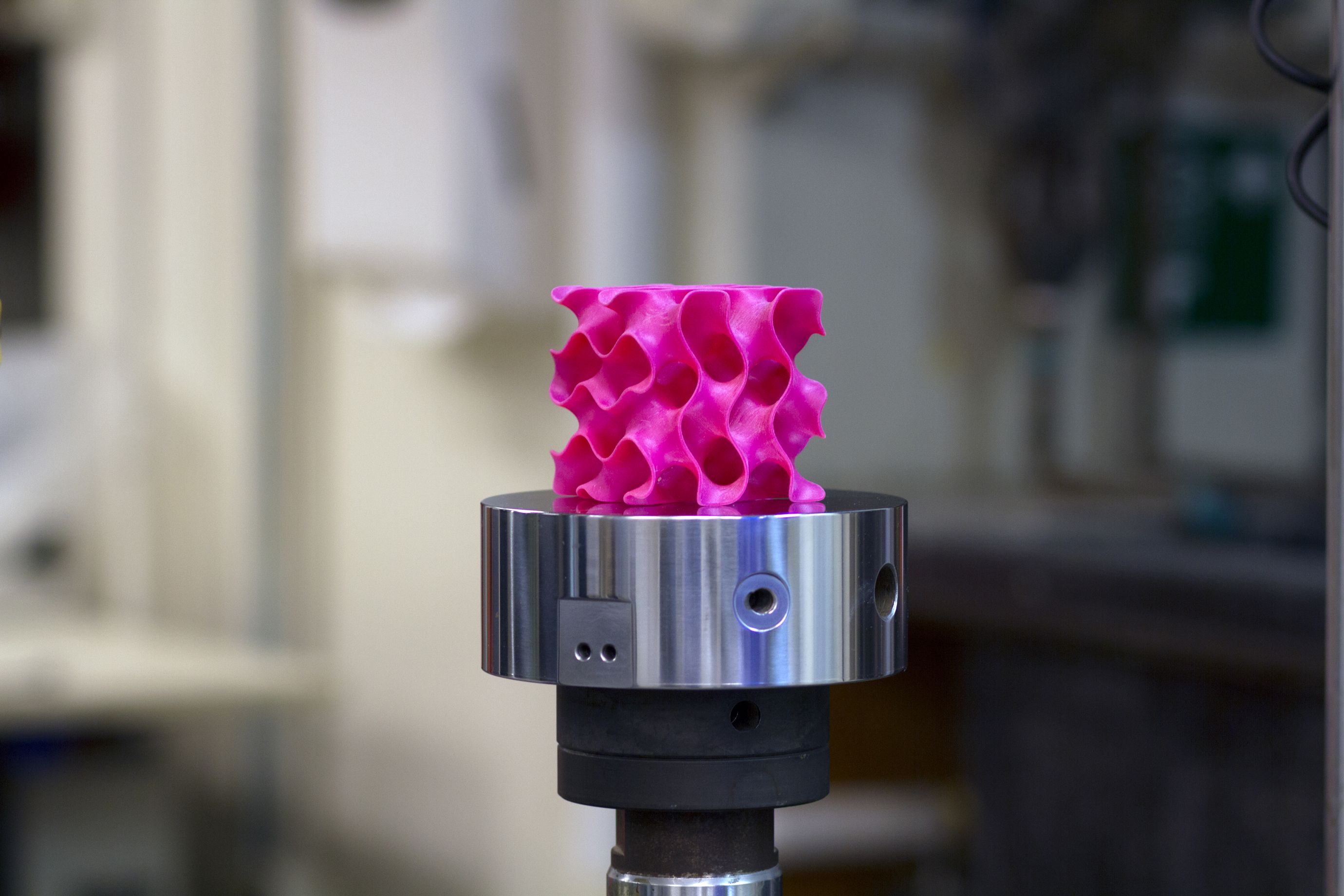
Graphene, a two-dimensional form of carbon, is thought to be the strongest of all known materials, but researchers have had a hard time translating that strength into three dimensions for practical use. Now, a team of MIT researchers has designed one of the strongest lightweight materials known, by compressing and fusing flakes of graphene. The new material, a sponge-like configuration, can be 10 times as strong as steel.
The findings show that the benefit of the new three-dimensional forms has more to do with their unusual geometrical configuration than with the material itself, which suggests that other materials could be adapted into strong, lightweight forms by creating similar geometric features.
Other groups had suggested the possibility of such lightweight structures, but lab experiments had failed to match predictions, sometimes having orders of magnitude less strength than expected. The MIT team, led by Markus Buehler, head of the Department of Civil and Environmental Engineering, decided to analyze the material’s behavior down to the level of individual atoms. They were able to produce a mathematical framework that very closely matches experimental observations.
Two-dimensional materials—basically, flat sheets that are just one atom thick—have exceptional strength as well as unique electrical properties. But because of their extraordinary thinness, “they are not very useful for making 3-D materials that could be used in vehicles, buildings, or devices,” Buehler says. “What we’ve done is to realize the wish of translating these 2-D materials into three-dimensional structures.”
The team simulated compressing small flakes of graphene using heat and pressure, producing a strong, stable structure that takes the form of gyroids, shapes with an enormous surface area in proportion to their volume. They created a variety of 3-D models for testing. In the simulations, one of their samples had just 5 percent the density of steel but 10 times the strength.
Buehler says the strength of their 3-D graphene material, composed of complex curved surfaces, resembles what happens with sheets of paper. Paper has little strength along its length and width, and it can be easily crumpled up, but when it’s rolled into a tube that is stood on its end, it can support substantial weight. Similarly, the geometric arrangement of the graphene flakes after treatment would naturally form a very strong configuration, he says.
Keep Reading
Most Popular
How scientists traced a mysterious covid case back to six toilets
When wastewater surveillance turns into a hunt for a single infected individual, the ethics get tricky.
The problem with plug-in hybrids? Their drivers.
Plug-in hybrids are often sold as a transition to EVs, but new data from Europe shows we’re still underestimating the emissions they produce.
What’s next for generative video
OpenAI's Sora has raised the bar for AI moviemaking. Here are four things to bear in mind as we wrap our heads around what's coming.
Stay connected
Get the latest updates from
MIT Technology Review
Discover special offers, top stories, upcoming events, and more.